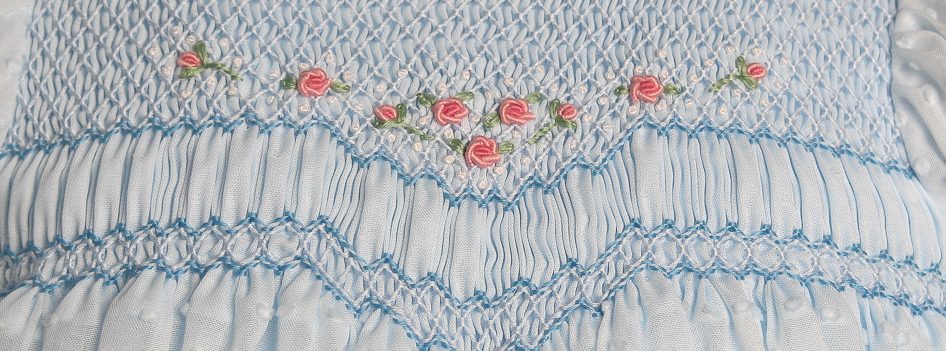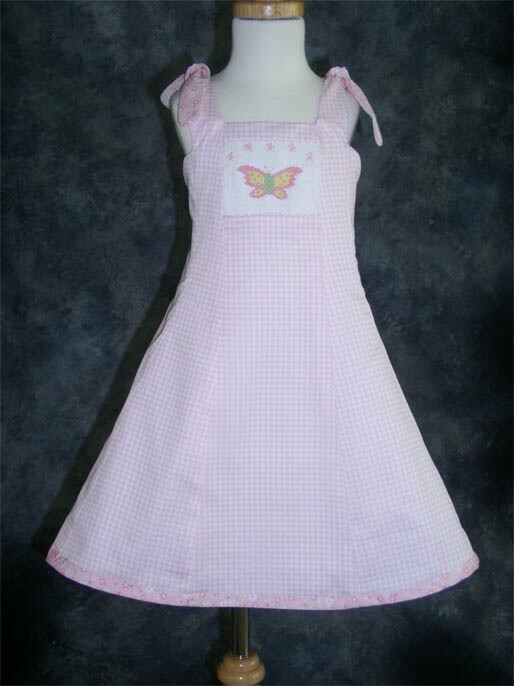In this sew-along we will be finishing up the gown by doing the Madeira hem or alternate hem.

First, I have to apologize as I’ve created a minor problem with the construction. For the original gown, I sewed the sleeves, inserted them into the gown, pleated the gown, did the hem treatment and finished with finishing the back of the gown and attaching the bias band. It seemed to me that it made more sense to do the hem last, as is done on most dress/gown projects. Obviously, I didn’t consider the full implications of changing the construction order. 🙄
To create the Madeira or alternate hem treatment, the back of the gown needs to be unfinished. So, for those that have finished the back of the gown already, you will need to remove the stitching in the hem area so that the Madeira hem can be sewn. I’m sorry for the un-stitching required, but thankfully, it’s a small amount. You will also need to add that hem allowance to each side of the pattern piece that you’ve created so that the contrast band pattern and fabric will be the same width as the unfinished gown.
The first step will be to cut 2 contrast bands of fabric, at least 1″ deeper than the highest point of the hem pattern created and as wide as the gown. Starch the bands as well as the skirt fabric. Then place the scallop pattern of your choice on top of one of the contrast bands, and trace around the scallop shapes with a blue wash-out marker.
Place the 2 contrast bands with right sides together and pin to secure. Put the water soluble thread on the sewing machine (top only) and stitch along the blue lines with a 2.0 stitch length. Be sure to take one diagonal stitch across each scallop peak before continuing stitching along the scallops. The diagonal stitch will result in a better looking point at the peak. Accuracy is essential – the way that the scallops are stitched now will be the way that they look on the finished garment.

After stitching the scallops, trim away the excess fabric from above the stitching line with an even seam allowance. Clip across the point. Then clip the seam allowance of the curves at 1/4″ intervals.

Turn seam allowance to the back (see video) on each side of the point, insert the long tweezers, pinching the folded seam allowances, and turn the point/fabric right side out. Press with a dry (NO STEAM) iron. Do this along the length of the contrast band until all points are turned and pressed. Ensure that you are satisfied with the points along the band, if not, make any adjustments.
IT IS HIGHLY RECOMMENDED THAT THIS TECHNIQUE IS PRACTICED ON SCRAP FABRIC PRIOR TO WORKING ON THE CONTRAST BAND!!! Use some of the leftover fabric from the project to try the techniques and then save the practice piece to practice the pinstitching on.
Place a damp linen press cloth on top of the fabric and press until COMPLETELY dry. Once it is completely dry, the 2 layers can be separated easily. If some places are still stuck together, repeat the process with the damp cloth.
Change the sewing thread to 60 wt. thread. Sew the contrast band to the gown with the right side of the contrast band to the wrong side of the fabric. Trim seam allowance. Understitch. Then press the contrast band to the right side of the fabric and pin the band to the gown along all the scalloped edges/points.
With 80 wt. thread in the top and bobbin, stitch the contrast band to the gown along the folded edge.
PINSTITCH HEM TREATMENT
To prepare the gown for the pinstitch, heavily starch (NOT ELLEN’S BEST PRESS) the hem of the dress. Allow to dry. Then press.
Cut 2″ strips of water soluble stabilizer (Sulky Fabri-Solvy) to the wrong side of the dress centering over the scallops and overlapping the stabilizer as needed.
Set the sewing machine to a pinstitch/hemstitch. The correct stitch will go back and forth 2x and then zigzag once. Use a #110 needle, 80 wt. thread on both the top and the bobbin and the open toed foot. Set the stitch to 2.5 L and 2.0 W. Stitch along the scallops, pivoting as needed and pivoting at the points (see video).

(optional) Trim away excess stabilizer carefully.
ALTERNATE HEM TREATMENT
If you machine doesn’t have a true pinstitch, a double needle hemstitch can be done using a double top-stitching stitch on the sewing machine. This stitch will go forward one stitch, go back one stitch, then go forward again in the same hole, repeat (so forward one, back one, forward 2). I have always called this a double stitch. Some call this a lightening stitch. Again, it is recommended that this stitch is practiced on scraps of fabric before doing it on the gown.
Starch the hem of the gown before beginning. Cut 2″ strips of water soluble stabilizer and pin them behind the scallops of the gown, overlapping as needed.
With 60 wt. thread on top and in the bobbin, the double hemstitching needle and an open toed foot, center the fold of the scallops between the 2 needles and stitch the double top-stitch, pivoting as needed. When the peak of a scallop is reached, leave the needles down, raise the pressure foot, pivot, set the pressure foot down and continue stitching. The fabric will look distorted when you pivot at the point, but as soon as the stitching continues, it will flatten out and look right.

Trim away excess stabilizer.
Regardless of which hem treatment was used, the remainder of the back of the gown can now be finished with a narrow hem.
Soak the gown in cold water for 5 minutes to remove all of the blue wash-out marker. If this doesn’t remove all of the stabilizer, then hand wash the garment in warm, sudsy water and agitate a bit. Rinse completely. Hang to dry and press as needed.
To finish the back of the gown, cut a length of 1/8″ ribbon (32″ – 40″, depending on size). Thread the ribbon into a tapestry needle and insert into the bias band at the neck. Begin at the edge of the bias band at one end and come out at the end of the smocking at the opposite end.
Sew 2 snaps on the back of the gown, the first snap 1″ below the bias band and the second snap 1″ below the first.
I hope you’ve enjoyed the sew-along and have gained some new tips and techniques that can be used in future projects! Please ask any questions you may have and I’ll be glad to answer!
Happy Stitching!!!
Kathy
YouTube Links:
I am adding links to the complete list of the products I’ve used throughout the series should you decide that you need any of these.
Gingher Pocket (Kindergarten) Scissors
Schmetz Double Hemstitch Needle (if your machine doesn’t have a pin-stitch)
Water soluble thread Vanish Lite
80 weight thread – Aurifil or Madeira Cotona
Sulky Fabri-Solvy or other water soluble stabilizer
Disclosure: The recommended products contain affiliate links. If you purchase something through one of those links I may receive a small commission, so thank you for supporting me when you shop! These are my opinions and are not representative of the companies that create these products. These are the products I use and have gotten great results with. I would never recommend poor quality products.

































































